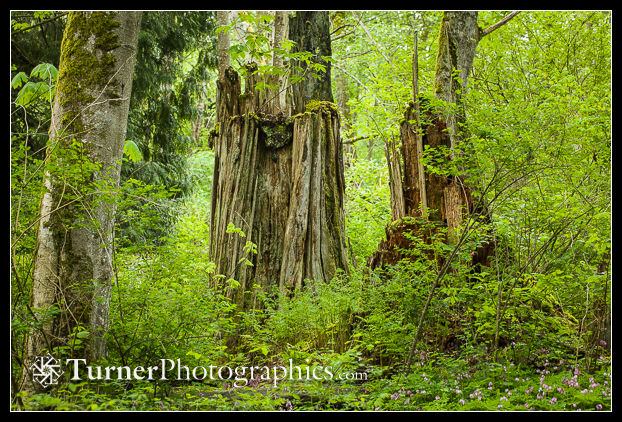Finding Solace Among the Salmonberries

We’re living in turbulent times. We face uncertainty about our health with a global pandemic circulating among us. People are getting killed and protests are raging in many of our cities. Our so-called leaders at the national level are failing to lead, choosing to incite anger rather than seeking to instill calm and rationality. Frankly, I’m stressed about the state of the nation right now.
I find solace in our woods. You’ve probably heard of shinrin-yoku, or the art and science of how trees can promote health and happiness. In English, we call it forest bathing. There are several books on the subject, including the one on my bedside table, Shinrin Yoku: The Japanese Art of Forest Bathing by Yoshifumi Miyazaki.
Most evenings Brian and I take a walk through our woods. The longest loop is only a bit more than a quarter mile, but we might take an hour ambling slowly along the path. The goal is not to get anywhere, nor to seek out anything in particular. We move slowly, observing the changes in the flowers, ferns, fruits, and trees since our last visit. We breathe deeply, inhaling the fragrance of the rich earth. We exhale our stress, sending it away on the gentle breezes of the forest understory. We listen to the sound of a woodpecker hammering on a decaying snag, the unidentifed songs of other birds, the gentle rustle of the leaves on the bigleaf maples overhead.
![Salmonberry blossoms & foliage [Rubus spectabilis]. Turner Photographics Woodland, Bellingham, WA. © Mark Turner [2002842] Salmonberry blossoms](/wp-content/uploads/2020/06/Turner_2002842.jpg)
We observe the seasonal changes in the salmonberries, Rubus spectabilis. This has been a good year for them, with many flowers spreading their rosy pink cheer. The bees have been busy, seeking nectar and spreading pollen from blossom to blossom.
![Salmonberry blossom as petals fall [Rubus spectabilis]. Turner Photographics Woodland, Bellingham, WA. © Mark Turner [2002160] Salmonberry blossom as petals fall](/wp-content/uploads/2020/06/Turner_2002160.jpg)
We noticed that in-between stage, when the flower is no longer complete but the fruit has yet to ripen.
![Salmonberry ripe fruit among foliage [Rubus spectabilis]. Turner Photographics Woodland, Bellingham, WA. © Mark Turner [2005668] Salmonberry ripe fruit](/wp-content/uploads/2020/06/Turner_2005668.jpg)
And now that the berries are ripening we compete with the birds and squirrels for tasty snacks. For those small critters, salmonberries are an important food source. The shrubs are full of the already eaten remains, an empty calyx that once cradled blossom and fruit. Here and there we spy ripe berries, either red or gold depending on the plant, and reach out to snag a tasty morsel. There are plenty so we don’t feel guilty picking some of these wild fruits, especially since we have dense thickets and only nibble at the edges along our trails.
An age-old question is whether the red or the yellow berries taste better. We conducted a test last night. I concluded that I couldn’t tell much difference, while Brian thought the ripest yellow berries were the sweetest. He picked berries for me, handing off the ripest fruit. I did the same for him.
We share the joy of spending quiet time in the woods. It’s our solace in this troubled world.

